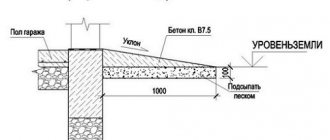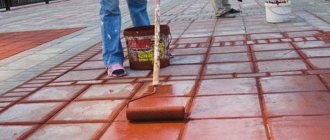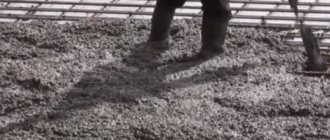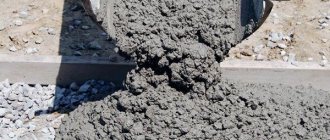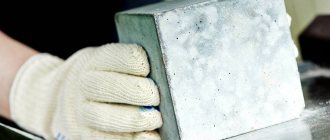The main area of application of asphalt concrete is the construction and repair of road surfaces. However, it is also in demand for landscaping work.
Thus, asphalt concrete can be used to cover:
- sidewalks
- Pedestrian paths
- garden paths
- Bicycle paths
- Treadmills
We examined the latter option in more detail in the article Asphalt for children's and sports grounds. Here we will talk about what materials are best suited for paving different types of paths and what nuances you need to pay attention to when carrying out such work.
How to choose asphalt for a path or sidewalk
The building materials market offers a wide variety of asphalt concrete mixtures (ABS). They differ in composition, ratio of components and sizes of mineral filler: crushed stone, gravel, sand and screenings. Each of them has its own scope of application.
You can use the table below to select the appropriate type of material for a specific task:
| Type of work | Hot coarse asphalt | Hot fine asphalt | Hot sand asphalt | Cold fine-grained or sandy asphalt | Asphalt cutting |
| Sidewalk, pedestrian path in the city | – | + | +++ | – | + |
| Long garden road | – | + | + | + | +++ |
| Small garden path | – | + | + | +++ | + |
How to read the table:
- “+++” is the best option for this type of work
- “+” – the material can be used, but there are better options in terms of price and quality
- “–” – this asphalt is either not suitable for such a task due to its technical characteristics, or it is unprofitable to use
For your convenience, we have placed this table below in the form of a picture:
Of course, no one forbids you to use any asphalt for landscaping - especially if we are talking about private territory. But if you order the wrong material, you risk throwing money away.
For clarity, let's look at these recommendations using specific examples:
- Sidewalks and pedestrian areas in the city occupy large areas. In addition, the traffic along them is quite intense, especially on the central streets. This requires large quantities of material, and at the same time – of sufficient quality. Asphalt cuttings (crushed asphalt) are cheap, but since it is a secondary product, it is not certified in any way. Cold asphalt is sold in bags, and purchasing it in large quantities is unprofitable. Therefore, for such purposes, universal hot mixtures are used.
- But the paths in a private yard are small, they don’t need so much material. The most profitable option here would be asphalt chips. But it can only be found on sale during the road repair season. In its absence, you can use cold asphalt. It is easy to lay and compact by hand. This means you don’t have to spend money on hiring workers.
- Coarse asphalt contains crushed stone grains up to 40 mm in diameter. This mixture is difficult to lay by hand. And to roll it you need heavy road equipment. Therefore, this type of asphalt is practically not used in landscaping works.
There is another interesting type of material - cast asphalt. Unlike hot and cold mixtures, it is a plastic mass that literally spreads over the prepared area. It also compacts under its own weight, without requiring the use of special equipment. At first glance, this is an ideal option for pedestrian paths. But in reality it is practically not used. Why? In the next section, we will take a closer look at the regulatory requirements for asphalt for landscaping and answer this question.
Where is this material used?
The use of asphalt crumbs can be found in many areas. To a greater extent it occurs when:
- Construction of roads, highways;
- Construction of small sites near country houses;
- When sprinkling stadiums and play areas in parks and outdoor entertainment centers.
As you can see, it can be used in many areas; it is not uncommon to find crumbs in forested areas of parks, where bicycle and pedestrian paths are sprinkled. When constructing new highways, asphalt chips are used to strengthen exits and shoulders, protecting the new road surface from deformation and vibrations. An interesting feature in recent years is that many construction companies are using chips to fill the top layer of the base before laying the finished floor. This serves as additional insulation from the damp foundation.
Today, crumbs have become popular among summer residents because of their relatively low cost. Modern village roads are built from crumbs. Indeed, in comparison with similar crushed stone or concrete roads, it has significant differences:
- It is highly resistant to moisture and various weather conditions;
- Durable;
- Not washed away by floods;
- Significantly lower in cost, given the low production costs.
Type and brand of asphalt for sidewalks
Existing GOST standards for asphalt concrete and ABS apply primarily to material for road construction. There are no separate standards for mixtures for landscaping. This is explained by the fact that the load on sidewalks in the city is insignificant. Compare for yourself: the average weight of a person is 70 kg, and that of a passenger car is 1000-1500 kg.
Therefore, the choice of asphalt for pedestrian areas is dictated not so much by technical characteristics (strength, wear resistance, etc.), but by considerations of economic benefit.
For example, TR 127-01 lists the following material characteristics as optimal:
- Grain size – fine or sandy
- Type (crushed stone content) – B (30-40% crushed stone or gravel) or D (sand)
- Brand – II, III
These recommendations are due to the fact that mixtures with a low crushed stone content are more plastic. To compact them, you do not need heavy road rollers, which will not turn around on the sidewalk.
At the same time, in areas where vehicle traffic is not planned, it is more profitable to use sand mixtures. As a rule, they cost less. Crushed stone asphalt is used to cover pedestrian areas wider than 2-3 m. Cleaning equipment will periodically drive over them, so in such cases additional strength is needed.
Regulatory documents also provide for the possibility of using cast asphalt to cover sidewalks. Moreover, TU 5718-002-04000633-2006, which establishes requirements for cast ABS, identifies a separate type of mixture for these purposes.
It has the following characteristics:
- Type – IV (sand)
- Maximum grain size – 5 mm
- Mass fraction of bitumen and mineral powder – 17-23%
But, as we noted, in practice, paths are not made from cast asphalt. The answer to the question “why” becomes clear if we compare the regulatory requirements for it and for conventional hot mixes.
They are given in GOST 9128-2013 and TU 5718-002-04000633-2006:
| Type of asphalt / Indicator | Hot dense or porous asphalt type B | Hot dense or porous asphalt type D | Type IV cast asphalt |
| Ultimate compressive strength at a temperature of 50 °C, MPa, not less | 1, 0-1,3 | 1,0-1,5 | 0,7 |
| Water saturation, % by volume, no more | 4,0-10,0 | 4,0-10,0 | 7,0 |
For your convenience, we have placed this table below in the form of a picture:
Now judge for yourself: the production of cast asphalt is an expensive process. This requires large volumes of bitumen and mineral powder. And to deliver the mixture you need a special transport equipped with a sealed container (kocher) and a stirrer. As a result, the cost of the material jumps 1.5-2 times compared to conventional hot asphalt.
It is also clear from the table that, in terms of their characteristics, cast ABS is no better (and in some cases worse) than conventional ones. That is, there is no point in overpaying.
Now you know what type and brand of asphalt is best to take for landscaping work. In the final section we will analyze the main subtleties of this process. We’ll also talk about how you can make your path not only functional, but also beautiful.
Alternative options
In addition, consumers often ask the question: which is better, asphalt chips or crushed stone? There is no definite answer to this, since these materials, including sand and broken brick and concrete, as a rule, perform the same functions. But the price of crumbs is lower, and crushed stone has a less harmful effect due to the absence of bitumen. So you need to make a choice based on circumstances and personal preferences.
Let's sum it up
Thus, asphalt chips will be an ideal option for you if you value simplicity and ease of installation and prefer to spend extra money on yourself and your loved ones rather than on building materials. For a parking lot or driveway, sports field or garage floor - this material will satisfy any of your needs!
Garden paths are an important attribute of landscape design. It is worth considering that they should not only be beautiful, but also functional. And in this article I would like to consider paths that do not need to attract attention. Asphalt pavement is ideal for such garden paths.
Features of asphalting paths and sidewalks
The general scheme for laying asphalt is quite universal. It remains the same for all cases of its use. Therefore, we will not analyze it in detail.
If you need step-by-step instructions, we recommend that you read the relevant articles on our website:
- Technology for laying cut asphalt
- Hot asphalt laying technology
- Cold asphalt laying technology
Here we will focus on the main nuances that need to be taken into account when carrying out work.
The arrangement of paths and sidewalks has the following features:
- Thickness of the asphalt concrete layer If you are laying out a path on your property or in the garden, then you do not need to lay a thick layer of material - 3-4 cm will be enough (5-6 cm before compaction). On central city streets, the thickness is increased to 6 cm - in case cleaning equipment and other light vehicles drive on the sidewalk. And in areas with particularly heavy traffic, asphalt is laid in two layers, 4-6 cm each. This scheme, for example, is used in Moscow.
- Equipment Road pavers will not turn around on the sidewalk, so they are laid using small-sized equipment - small self-propelled or manual rollers or vibrating plates. If you are making a path from cold asphalt or asphalt chips, then it can be compacted by hand. But this option only works in warm weather and takes longer. As a last resort, you can roll the coating with car wheels. But this makes it more difficult to achieve uniform compaction.
- Technological properties of asphalt concrete mixtures This point follows from the previous one. Since heavy equipment is not used for such work, the asphalt must be flexible and compactable. Do not use ABS with a high content of crushed stone (types A, B) or large (more than 20 mm in diameter) asphalt chips for arranging paths. They will be very difficult to work with.
Another point that is relevant here is the appearance of the tracks. After all, owners of private houses usually want their site to look neat and pleasing to the eye. But the asphalt on city streets often seems gray, dull and dull. Is it possible to make it “play”? Let's take a closer look at this.
Soil preparation
Before you start preparing the soil for asphalt, you need to decide on the size and boundaries of the path. When choosing a place for a path, you need to pay attention to the fact that there are no trees growing nearby, since in the future their roots will grow and destroy the asphalt surface. Within the selected boundaries of the path, a layer of soil is removed and compacted to a depth of approximately 30.0 cm.
Next, to delineate the boundaries of the sidewalk, curbs are installed on both sides, the purpose of which is not only to define the boundaries, but also to stop the asphalt from spreading. To do this, trenches are dug on both sides, a control cord is pulled, and bricks or other curbing material are laid on the cement mortar.
In order for the asphalt to serve for a long time and not fall through, you need to build a cushion under it. The process of creating a pillow takes place in several stages:
- Sand is poured onto the compacted bottom of the trench to a height of 15 - 20 cm. This layer is carefully compacted.
- A layer of coarse crushed stone about 40.0 cm thick is poured on top of it.
- Next, a layer of waterproofing is laid.
- On top of these two layers and waterproofing, another one is constructed from fine gravel.
- So that all these three layers are dense, fill them with water and compact them well again. Thus, we can assume that the pillow is ready.
- The only thing that needs to be added is the construction of drainage holes on the sides to collect rainwater from the paths.
Creation of decorative paths from asphalt
Asphalt itself is not aesthetically pleasing. Hot and cold mix coatings may boast a rich black color when installed, but will wear and fade over time. And cheap cuttings initially have a nondescript gray tint.
Fortunately, there are different ways to give your asphalt path a unique look:
- Curb stone Arrangement of a curb is a mandatory element in the construction of a path if it rises above ground level. It protects the edges of the asphalt from coloring and shedding. In addition, the curb also performs a decorative function. You can use either a traditional stone of white or light gray color, or various colored varieties.
- Zoning with paving slabs You can create a combined path by combining sections of asphalt and facing materials. This way you will kill two birds with one stone. On the one hand, decorative tiles will “revive” the area and give it variety. On the other hand, such a design will cost less than if you completely paved the area. Just keep in mind that laying tiles over existing asphalt is not recommended.
- Laying crumb rubber coating Asphalt concrete is a good and reliable base for all kinds of rubber materials: tiled, rolled and seamless (they are also called “soft asphalt”). They are available in different colors and also act as a shock-absorbing coating in areas where children play. The main condition is that the asphalt concrete must have a slight slope so that water does not stagnate on it.
- Applying bitumen emulsion or mastic This way you can “refresh” the old coating, returning to it the rich color of freshly laid asphalt. In addition, bitumen compounds clog small cracks and pores on the surface of the path and protect it from destruction by water, ice and deicing agents. Thanks to this, asphalt lasts longer.
- Applying rubber or polymer paint With its help, you can quickly paint the coating in any color of the rainbow. True, it does not look very natural and often stands out from the design of the site. In addition, even the highest quality paints fade and wear off over time, not to mention cheaper compositions.
- Colored asphalt For the sake of completeness, we will mention this option, but in practice it is almost never used. The fact is that to produce such material you need special bleached bitumen or synthetic binder. Add to this the cost of pigments, and it becomes clear that colored asphalt is not a cheap pleasure. If you really want to make a path of a certain color that will not fade over time, then it will be cheaper to order decorative tiles.
Summarize.
Asphalt is popular not only in the field of road construction, but also in landscaping and designing areas - both urban and private. It is used to make coverings for sidewalks, pedestrian, garden, bicycle and jogging paths. In cities, hot material based on sand or small crushed stone is used for this. But for a private home, cutting asphalt will be the most profitable. If the amount of work is small, you can use cold mixtures. They do not require heating and are easy to install by hand.
One of the disadvantages of the material is its modest decorative properties. To add variety to the design of the site, the asphalt path can be decorated with a curb or tiles, covered with special paint, or a soft rubber coating can be laid on it.
Technology for laying asphalt chips
This technology began to be used in road construction relatively recently, but in a short time it has fully confirmed its advantage. As mentioned above, asphalt chips are a secondary product, more precisely the result of multi-layer removal of the old road surface followed by crushing. Despite the low cost of production, the material is distinguished by its significant strength and can be processed.
One of the main advantages of this material is considered by many to be the ability to densely fill all voids and cracks in the coating. Even with time and gradual compaction with the help of cars, such a coating only becomes stronger and more durable. Due to the dense laying, the road is practically not subject to erosion.
Working with such material is incredibly simple; the main thing is to know the basic cycle and laying technology, which includes several successive stages:
- The first thing to do is to clear the masonry area as efficiently as possible, and then lay the so-called “cushion”. In each specific case, it may differ depending on the specification of the future road. For example, you can use crushed stone, concrete or broken brick. In some cases, it is justified to lay several layers of the listed materials.
- After this, the surface must be carefully leveled using special road equipment.
- Next, pour out the material of the future coating and level it over the entire plane.
- The last stage includes compaction with rollers. After all the above stages, the road is ready for use.
Note: here it is necessary to note the peculiarity that for such coatings it is not recommended to use rollers weighing more than 10 tons. And if you pre-fill the canvas with bitumen, you can achieve better strength and impermeability of the coating.
Considering the main advantage of such a material, such as low cost, more and more people are filling the roads in their areas with crumbs. In addition, it is gradually replacing classic materials, such as paving slabs and paving stones, used for arranging playgrounds and park areas.
When installing yourself manually, you need to similarly maintain the technology and stages of work in order to achieve a positive result.
Note: pay special attention to the route of communications. Take into account the fact that sooner or later you will have to change pipes and the like, which will accordingly lead to the destruction of the canvas.
When we have determined the size of the plot, we order about 10-12 tons of asphalt chips per 100 square meters. Consider the amount of work. If the area is really large, it is better to rent a small skating rink. As a rule, the factory selling the material will be happy to lend its equipment for use, of course for an additional fee.
When the material is ordered, you can begin preparing the site, namely removing the top layer of soil. Keep in mind that you will have to remove at least 20 cm. As a result, a characteristic trench will form. If desired, you can put a layer of geotextile on the bottom, it will prevent soil subsidence.
A mound (cushion) of crushed stone and sand is laid on top of the geotextile or earth. Each layer is at least 3-5 cm. In principle, if high pressure is not planned for the area, you can do without these materials.
Note: the volume of soil is large, so take care of removing the soil in advance.
After all the preparatory work, you can safely start pouring the crumbs; this must be done sequentially. For convenience, you should get a couple of assistants, because it will be difficult to cope with such a volume of work alone. The crumbs are poured out in small “batches” to avoid the formation of voids. If the area is large, it is better to use a roller. There is nothing complicated in managing it, but at the same time you will save a lot of time and effort. To achieve coating strength, bitumen emulsion should be applied first. Thanks to bitumen, it will only be stronger and will also become resistant to temperature changes during the cold period.
The technology for laying on roadsides and ramps is identical and is carried out according to the same scheme. The material is considered the best alternative to crushed stone and sand, but in comparison with the classic coating it does not have enough strength; after all, the crumb is loose in structure.
Cost of reconstruction
The issue of price is the main one for many. How much the customer will have to pay for the restoration of the asphalt path is determined by:
- size (width, length, depth) of defects, potholes;
- amount of damage;
- location of damaged areas on the surface of the canvas;
- conditions for carrying out restoration work;
- the presence of nearby storm drains and hatches;
- volume of asphalt concrete used, its composition;
- type of surface being repaired (pedestrian path, bicycle path, adjacent road element, ramp);
- the need for preliminary dismantling and other preparatory work;
- the need for removal and subsequent disposal of construction waste;
- the type of reconstructive technology used.
If the restoration was carried out in compliance with all requirements and standards, the track will last for a very long time.
Why is there a need to reconstruct asphalt paths?
Among the main reasons that worsen the condition of the coating:
- Natural wear and tear, time factor. Asphalt is durable, but over the years it loses its integrity. To extend its service life, it is necessary to prevent movement on the surface of large equipment. During the cold season, it is not advisable to treat it with aggressive reagents.
- Violation of installation conditions. Poor drainage or its complete absence, uncompacted soil base - all these are the reasons for surface subsidence. In winter, precipitation causes great damage to asphalt concrete. They fall into small cracks, melt in them, and then freeze. As you know, when water freezes it expands. Because of this, small defects become larger. As a result, restoration measures have to be carried out in the spring. To avoid such a scenario, you need to close all defects in the spring.
- Violation of operating rules. Large equipment should not move along pedestrian paths - they destroy it. In summer, concrete heats up and softens a little. If heavy objects are placed on it at this time, depressions and unevenness may form. They will have to be removed later.
Proper use and timely repair of paths guarantees their long service life. Reconstruction should always be performed in the early stages of deformity.
Content:
- Construction of asphalt paths 1.1. Bitumen 1.2. Sand 1.3. Gravel, crushed stone
- Features of asphalt paths
- Why is there a need to reconstruct asphalt paths?
- Technological solutions 4.1. Fighting pits 4.2. Reconstruction of cracks 4.3. Sealing
- Cost of reconstruction
When constructing pedestrian zones, parks, and adjacent areas, asphalt paths are often laid.
This is a quickly constructed and affordable type of road surface that makes the movement of pedestrians and cyclists comfortable and safe. Over the years, the performance properties of asphalt paths deteriorate. Then they have to be repaired. It is important to begin reconstruction when the first minor defects appear. Then it will be possible to extend the service life of the surface, saving time and money.



